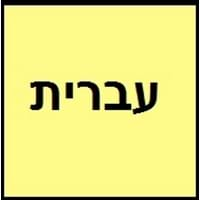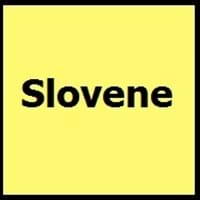Hebrew and Slovene
Countries
Israel
European Union, Slovenia
National Language
Israel
Austria, Croatia, Hungary, Italy, Slovenia
Second Language
Israel
Not spoken in any of the countries
Speaking Continents
Africa, Asia, Europe
Europe
Minority Language
Poland
Austria, Hungary, Italy
Regulated By
Academy of the Hebrew Language
Slovenian Academy of Sciences and Arts
Interesting Facts
- The original language of Bible is Hebrew.
- The men and women use different verbs in hebrew language.
- The Freising Monuments is the oldest preserved records of written Slovene from 10th century.
- The first Slovene book was printed in 1550.
Similar To
Arabic and Aramaic languages
Serbo-Croatian
Derived From
Aramaic Language
Not Available
Alphabets in
Hebrew-Alphabets.jpg#200
Slovene-Alphabets.jpg#200
Writing Direction
Right-To-Left, Horizontal
Left-To-Right, Horizontal
Thank You
תודה (Toda)
Hvala
How Are You?
מה שלומך? (ma shlomxa)
Kako se imate?
Good Night
לילה טוב (Laila tov)
Lahko noč
Good Evening
ערב טוב (Erev tov)
Dober večer
Good Afternoon
אחר צהריים טובים (Achar tzahara'im tovim)
Dober dan
Good Morning
בוקר טוב (Boker tov)
Dobro jutro
Please
בבקשה (bevekshah)
Prosim
Sorry
סליחה! (Slicha)
Oprostite
Bye
להתראות (Lehitraot)
Nasvidenje
I Love You
אני אוהבת אותך (Ani ohevet otcha)
Ljubim te
Excuse Me
בבקשה!
Oprostite
Dialect 1
Ashkenazi Hebrew
Prekmurje Slovene
Where They Speak
Israel
Hungary, Slovenia
How Many People Speak
Not Available
Dialect 2
Samaritan Hebrew
Resian
Where They Speak
Israel, Palestine
Italy
Dialect 3
Yemenite Hebrew
Styrian
Where They Speak
Israel
Slovenia
Speaking Population
Not Available
Not Available
Second Language Speakers
Not Available
Native Name
עברית / עִבְרִית (ivrit)
Not available
Alternative Names
Israeli, Ivrit
Slovenian, Slovenscina
French Name
hébreu
slovène
German Name
Hebräisch
Slowenisch
Pronunciation
[(ʔ)ivˈʁit] - [(ʔ)ivˈɾit]
[slɔˈʋèːnski ˈjɛ̀ːzik], [slɔˈʋèːnʃt͡ʃina]
Ethnicity
Not Available
Slovenes
Language Family
Afro-Asiatic Family
Indo-European Family
Subgroup
Semitic
Not Available
Branch
Canaanitic
Not Available
Early Forms
Biblical Hebrew, Mishnaic Hebrew, Medieval Hebrew, Hebrew
No early forms
Standard Forms
Modern Hebrew
Slovene
Language Position
Not Available
Signed Forms
Signed Hebrew
Not Available
Scope
Individual
Individual
ISO 639 6
Not Available
Not Available
Glottocode
hebr1246
slov1268
Linguasphere
12-AAB-a
53-AAA-f
Language Type
Living
Living
Language Linguistic Typology
Subject-Verb-Object, Verb-Subject-Object
Not Available
Language Morphological Typology
Fusional, Synthetic
Fusional
All Hebrew and Slovene Dialects
Most languages have dialects where each dialect differ from other dialect with respect to grammar and vocabulary. Here you will get to know all Hebrew and Slovene dialects. Various dialects of Hebrew and Slovene language differ in their pronunciations and words. Dialects of Hebrew are spoken in different Hebrew Speaking Countries whereas Slovene Dialects are spoken in different Slovene speaking countries. Also the number of people speaking Hebrew vs Slovene Dialects varies from few thousands to many millions. Some of the Hebrew dialects include: Ashkenazi Hebrew, Samaritan Hebrew. Slovene dialects include: Prekmurje Slovene , Resian. Also learn about dialects in South American Languages and North American Languages.
Hebrew and Slovene Speaking population
Hebrew and Slovene speaking population is one of the factors based on which Hebrew and Slovene languages can be compared. The total count of Hebrew and Slovene Speaking population in percentage is also given. The percentage of people speaking Hebrew language is Not Available whereas the percentage of people speaking Slovene language is Not Available. When we compare the speaking population of any two languages we get to know which of two languages is more popular. Find more details about how many people speak Hebrew and Slovene on Hebrew vs Slovene where you will get native speakers, speaking population in percentage and native names.
Hebrew and Slovene Language Codes
Hebrew and Slovene language codes are used in those applications where using language names are tedious. Hebrew and Slovene Language Codes include all the international language codes, glottocodes and linguasphere.





